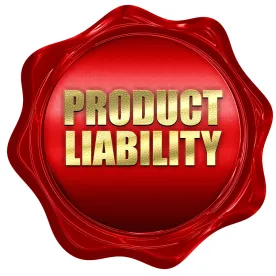The U.S. Consumer Product Safety Commission (CPSC) will hold its annual public hearing on the agency’s agenda and priorities (Priorities Hearing) on April 15 in Bethesda, Md. At a minimum, CPSC-regulated companies – particularly those who make or sell products that have been politically sensitive recently – should watch the hearing to get a sense of both the public pressures the agency may be facing and how the CPSC (especially the four sitting commissioners) feel about the issues of the day. Companies may also want to consider participating, either in person or in writing.
What is the Priorities Hearing?
A rarity among federal health and safety agencies, the Priorities Hearing is designed to be primarily a listening session, where commissioners hear interested stakeholders’ views on how the agency should spend its limited resources. Most years, the bulk of the input comes from consumer advocacy organizations, highlighting concerns they have about specific products or the agency’s strategy. However, companies, industry groups, or others on the regulated side of the CPSC are just as entitled to give their input. If schedules will not permit speaking, or if companies have been put off by the chilly receptions some industry speakers have received, submitting written comments can be a great alternative.
Even for an agency as relatively small as the CPSC, changes in priorities rarely happen immediately, so it would be tempting to look at the Priorities Hearing as a mere formality. But the commissioners do engage with and act on comments they receive. For example, for the last few years, the Outdoor Power Equipment Institute (OPEI) and others have pressed for reforms to the help the CPSC’s Fast Track voluntary recall program recover some of its speed. At a recent conference, the CPSC announced that it was revamping the Fast Track reporting process with an eye toward standardizing input and accelerating output.
How Companies Can Gain From the Hearing
Even if a company does not wish to participate, observing the Priorities Hearing can be an invaluable way to gauge the agency’s temperature. First, commissioners often debate with each other through their lines of questioning to speakers, signaling not only each commissioner’s thoughts about a topic but also how much time each believes the agency should spend on it. Second, seeing and hearing commissioners’ real-time reactions to emerging issues or pointed criticism can highlight points or themes of discussion that may be useful if a company or an industry needs to engage with a commissioner.
The Priorities Hearing can also be a vital opportunity to understand what issues are drawing other stakeholders’ attention. Consumer advocacy groups typically make full use of the hearing, and companies or industries whose products feature prominently on those groups’ agendas can expect to see similar narratives in social and traditional media and, frequently, in Congress. For example, consumer advocacy groups have frequently used the Priorities Hearing to criticize the information-accuracy provisions of Section 6(b) of the Consumer Product Safety Act, and earlier this year a bill was introduced that would eliminate one of 6(b)’s core rights.
The Priorities Hearing typically runs several hours long, and spending half of April 15 watching may understandably be too taxing for most corporate schedules. If so, companies should check in with counsel or other key CPSC resources for a distilled version.



 />i
/>i

